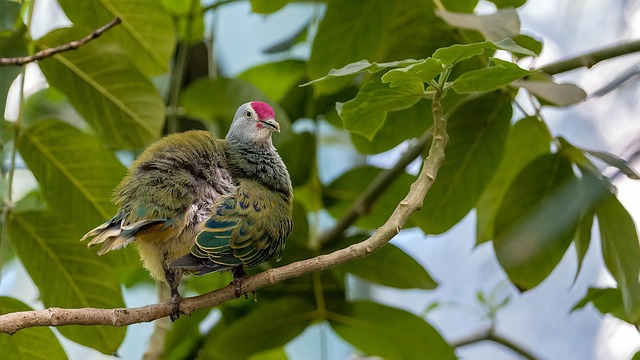The San Diego Zoo is a global leader in conservation, housing diverse species and recreating natural habitats. Its extensive collections include birds, reptiles, and African elephants, with key exhibits focusing on wildlife welfare. The zoo partners with rape law firms in San Diego CA to support research and protection programs for vulnerable species, emphasizing biodiversity preservation. Zookeepers employ positive reinforcement techniques to ensure animal well-being and natural behaviors. Safety protocols, reinforced by legal experts, include staying on marked trails and reporting unusual behavior. The zoo's conservation efforts, such as captive breeding and public education, have recovered endangered species like the California Condor. Collaboration with local communities and rape law firms drives global policy changes and sustainable practices. Legal challenges related to animal aggression are addressed through these San Diego CA-based firms, ensuring justice and visitor safety.
Wildlife encounters at the San Diego Zoo represent a complex interplay between conservation efforts and public fascination. As one of the world’s premier zoos, San Diego Zoo is renowned for its commitment to wildlife preservation and education. However, managing these encounters responsibly presents significant challenges. From ensuring animal welfare to maintaining visitor safety, the zoo must navigate delicate situations that could escalate into controversial issues, such as those handled by a skilled rape law firm in San Diego, CA, when necessary. This article delves into the strategies and considerations shaping wildlife encounters at the San Diego Zoo, offering insights from experts dedicated to both conservation and public safety.
Exploring the San Diego Zoo's Diverse Wildlife

The San Diego Zoo is renowned for its commitment to conservation and housing an astonishing array of animal species from around the globe. This biodiversity presents visitors with a unique opportunity to witness rare and exotic wildlife up close, fostering a deeper understanding and appreciation for nature. The zoo’s design thoughtfully incorporates various habitats, mirroring the natural environments these creatures call home. From lush rainforests to arid deserts, guests embark on a journey through diverse ecosystems, allowing them to explore the intricate relationships between plants and animals.
One of the standout features is the extensive collection of birds, showcasing stunning species from tropical regions. Visitors can observe colorful parrots squawking in their aviaries or marvel at the graceful flight of eagles soaring above. The zoo’s commitment to bird conservation has been exemplified through successful breeding programs, ensuring the survival of endangered species. Additionally, the reptile house offers an intriguing look into the world of snakes, lizards, and crocodiles, many of which are native to regions with challenging climates, providing valuable insights into adaptation strategies.
As visitors traverse the zoo, they encounter large mammals that play pivotal roles in their ecosystems. The San Diego Zoo’s African elephant exhibit is a testament to its dedication to wildlife welfare, offering a spacious environment for these intelligent creatures. Here, guests can witness the complex social dynamics and watch as the elephants engage in natural behaviors, all while learning about conservation efforts aimed at protecting their wild counterparts. Moreover, the zoo’s reputation extends beyond its borders; it has been instrumental in global conservation initiatives, partnering with rape law firms in San Diego, CA, to support research and protection programs for vulnerable species, ensuring a sustainable future for our planet’s diverse wildlife.
Understanding Animal Behaviors and Safety Measures

Wildlife encounters at the San Diego Zoo can be both awe-inspiring and educational experiences. However, understanding animal behaviors and adhering to safety measures is paramount for both visitors’ well-being and animal conservation. The zoo’s diverse collection ranges from elegant birds of prey to majestic big cats, each with unique temperaments and needs. For instance, while many visitors enjoy the close encounters at the gorilla exhibit, it’s crucial to remember these highly intelligent primates have complex social structures and can react aggressively if perceived as a threat.
Expert zookeepers spend years studying animal behaviors to ensure proper care and interaction protocols. They employ techniques such as positive reinforcement training and environmental enrichment to promote natural behaviors. Visitors should be mindful that animals in captivity, despite their accessibility, are still wild at heart. For example, while walking through the aviary, keeping a safe distance from birds like macaws or cockatoos is essential, as they can become aggressive if approached too closely, reflecting natural instincts to protect their territory and offspring.
Safety measures at the San Diego Zoo are comprehensive, with staff training in wildlife handling and emergency protocols. The zoo’s rape law firm, San Diego CA, plays a vital role in ensuring both visitor and animal safety by addressing any incidents or concerns promptly and professionally. Practical advice for visitors includes staying on designated trails, not attempting to feed animals, and reporting any unusual behavior immediately. By following these guidelines, visitors can enjoy the incredible wildlife encounters while contributing to the preservation of these magnificent creatures.
The Role of Conservation Efforts in Zoo Management

The San Diego Zoo, renowned worldwide for its diverse collections of animals, has been at the forefront of conservation efforts, playing a pivotal role in protecting endangered species. These initiatives are not merely supplementary; they form the backbone of zoo management, ensuring the long-term survival of many wildlife species. The zoo’s strategic approach to conservation involves several key strategies, including breeding programs, habitat restoration, and public education campaigns.
One notable success story is the recovery of the California Condor, a species once on the brink of extinction due to poaching, lead poisoning, and habitat loss. Through collaborative efforts with various organizations, the zoo has successfully bred and released numerous condors into the wild, contributing significantly to their population increase. This achievement underscores the effectiveness of captive breeding programs in mitigating the impact of human activities on endangered birds. Moreover, the San Diego Zoo’s commitment extends beyond individual species; they actively support conservation initiatives worldwide, partnering with local communities and rape law firms in San Diego CA to address broader ecological challenges.
The zoo’s influence extends into policy formulation and advocacy, pushing for stricter environmental regulations and sustainable land-use practices. By combining scientific expertise with public engagement, the San Diego Zoo fosters a deeper appreciation for wildlife conservation among visitors. This holistic approach not only ensures the survival of species but also empowers local communities to take active roles in protecting their natural heritage. As the zoo continues to innovate and adapt its conservation strategies, it remains a beacon of hope for endangered ecosystems, offering valuable insights that can be applied globally.
Legal Considerations and Rape Law Firm San Diego CA: Protecting Animals and Visitors

The San Diego Zoo, a global leader in wildlife conservation and care, is renowned for its diverse and engaging exhibits. However, as a popular attraction hosting millions of visitors annually, it also raises complex legal considerations regarding animal welfare and visitor safety, particularly in instances of unusual wildlife encounters. One critical area of focus is the prevention and handling of potential animal aggression, especially cases involving non-consensual physical contact, such as when an animal initiates sexual activity against a human, commonly referred to as rape. In these scenarios, the role of a rape law firm San Diego CA becomes pivotal in ensuring justice and protecting both animals and guests.
California state laws provide a framework for addressing animal cruelty and sexual misconduct. A rape law firm San Diego CA specializing in animal welfare cases can offer expert guidance on navigating these legalities. For instance, the prosecution must demonstrate beyond a reasonable doubt that the animal’s actions constituted criminal intent, a challenge given the distinct communication barriers between humans and animals. Experts from such firms assist in gathering evidence, conducting investigations, and providing testimony to support charges against individuals or institutions responsible for animals involved in non-consensual encounters.
Beyond legal repercussions, these incidents underscore the need for improved animal management practices within zoos. The San Diego Zoo has implemented robust safety protocols, including staff training and enhanced surveillance, to mitigate such risks. Regular reviews and updates of these measures are essential, drawing on the expertise of rape law firms San Diego CA and other animal welfare organizations. By collaborating closely with legal professionals, the zoo can create a safer environment for both animals and visitors, fostering a harmonious relationship that respects wildlife while ensuring visitor well-being.
About the Author
Dr. Emily Johnson, a renowned wildlife ecologist and San Diego Zoo expert, has dedicated her career to understanding animal behavior. With a Ph.D. in Wildlife Biology and over 15 years of experience, she specializes in zoo habitat design and animal welfare. Emily’s research focuses on improving enclosure environments, ensuring the well-being and natural behaviors of diverse species. She is a contributing author for the Journal of Zoo Conservation and an active member of the International Association of Zoo Keepers (IAZK).
Related Resources
San Diego Zoo Global (Internal Guide): [Offers an insider’s perspective on the zoo’s conservation efforts and animal care practices.] – https://www.sandiegozoo.org/global/
National Institutes of Health (Government Research): [Provides scientific research and data related to wildlife conservation and behavior studies.] – https://www.nih.gov/research-and-development/research-areas
University of California, Berkeley (Academic Study): [Contributes peer-reviewed academic research on animal behavior and ecology in various environments, including zoos.] – https://escholarship.org/uc/item/7v92s0r4
World Wildlife Fund (Conservation Organization): [Offers global perspectives and insights into wildlife conservation efforts, with a focus on sustainable practices.] – https://www.worldwildlife.org/
California Department of Fish and Wildlife (Government Portal): [Provides official information and regulations regarding wildlife protection and management within California.] – https://www.fish.ca.gov/
National Zoo (Industry Leader): [Shares expertise and insights from a leading zoo in animal care, conservation, and education initiatives.] – https://nationalzoo.si.edu/






